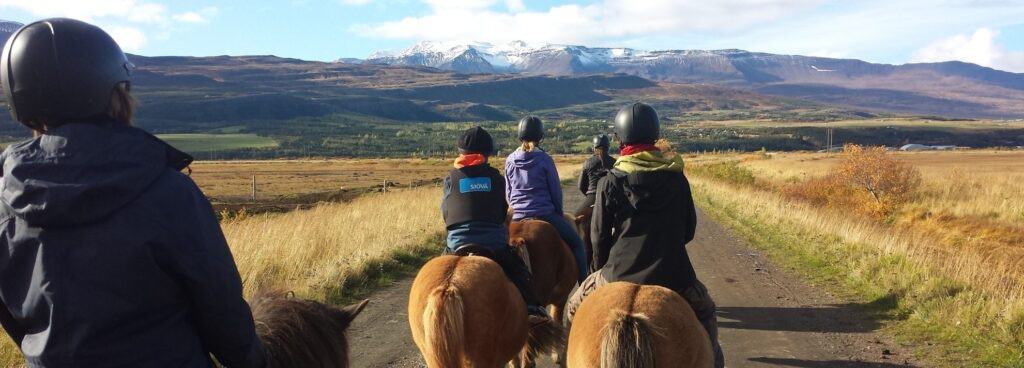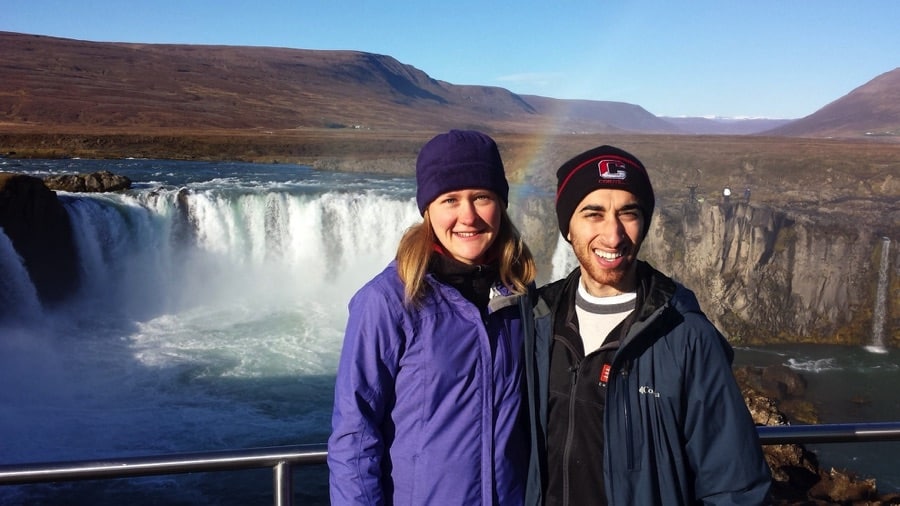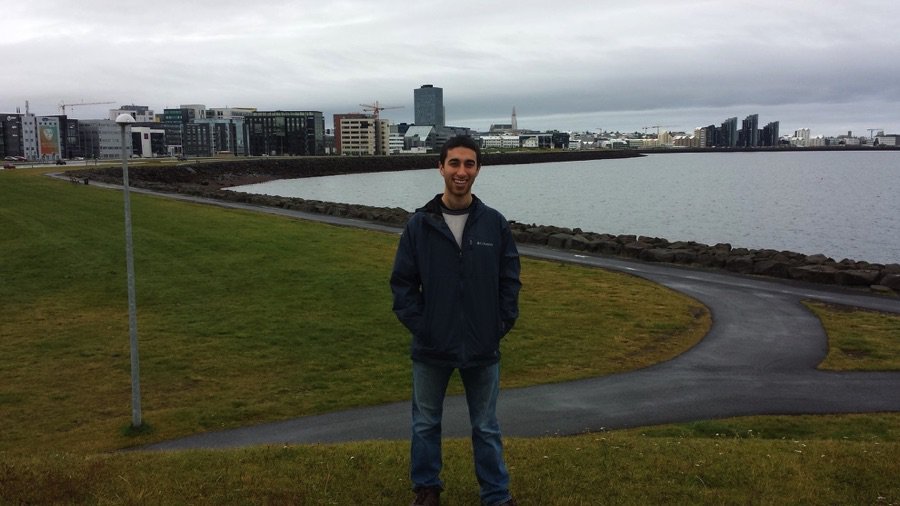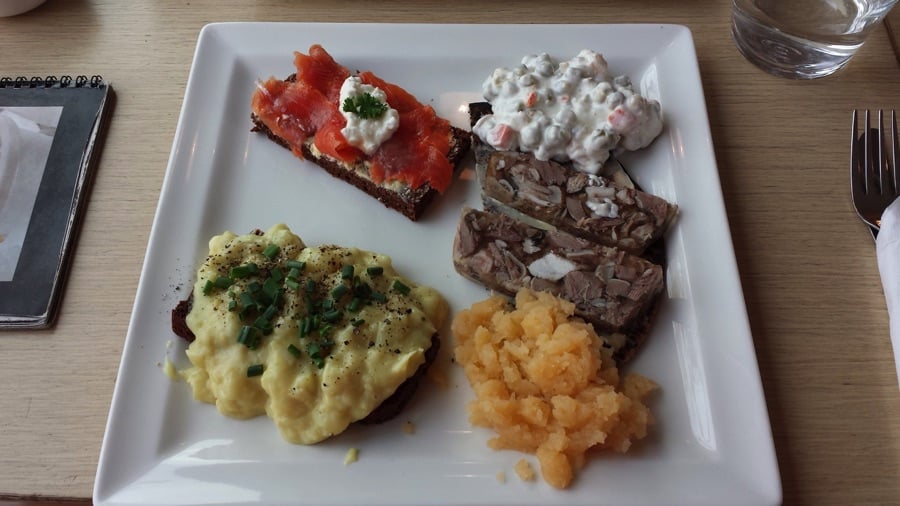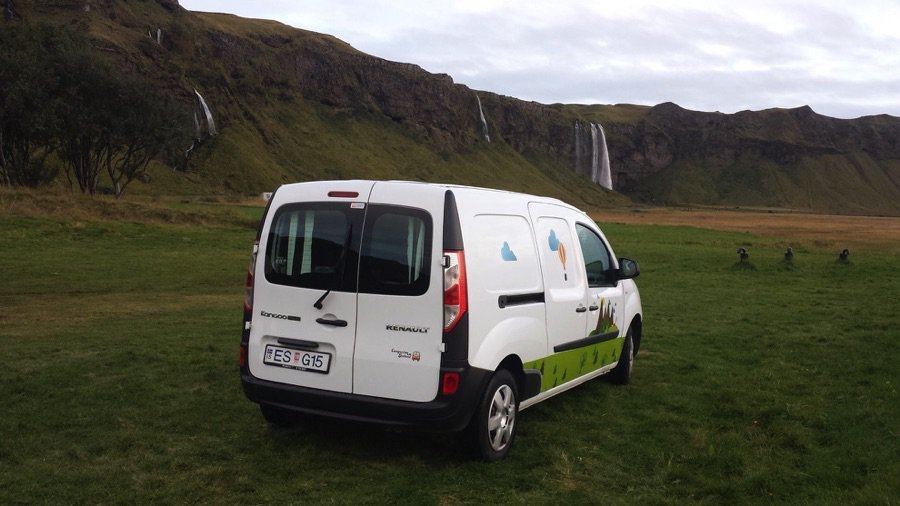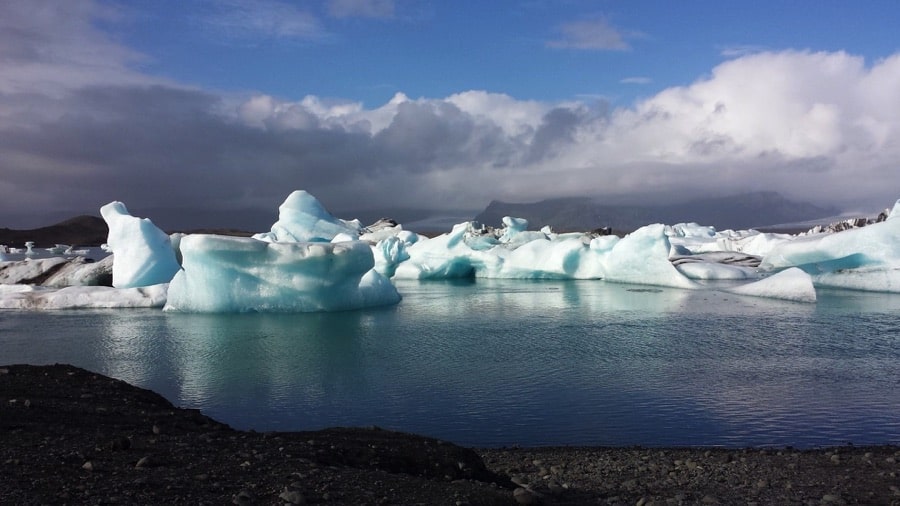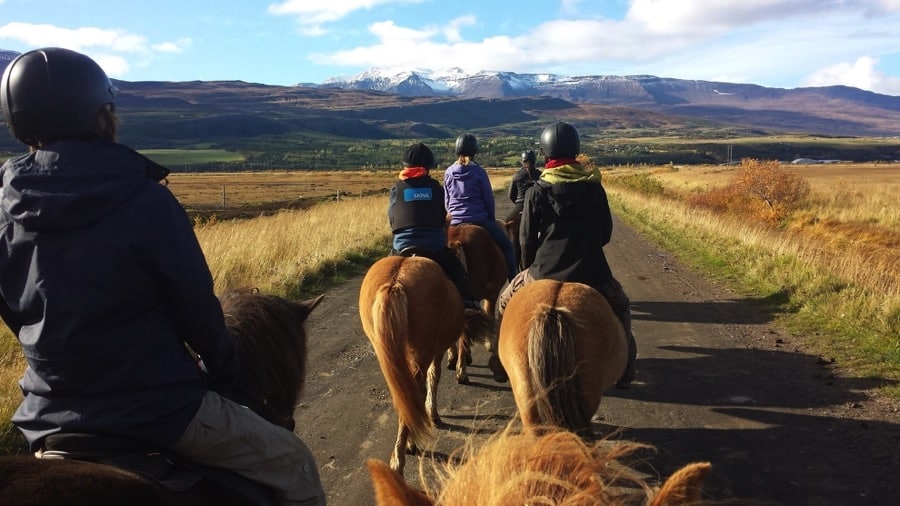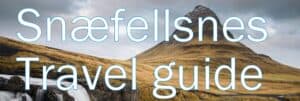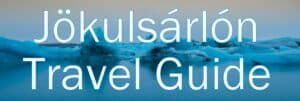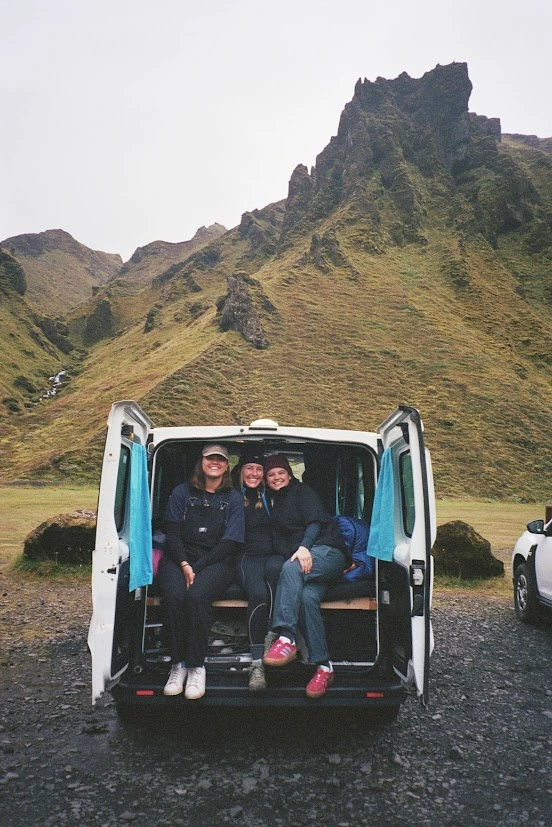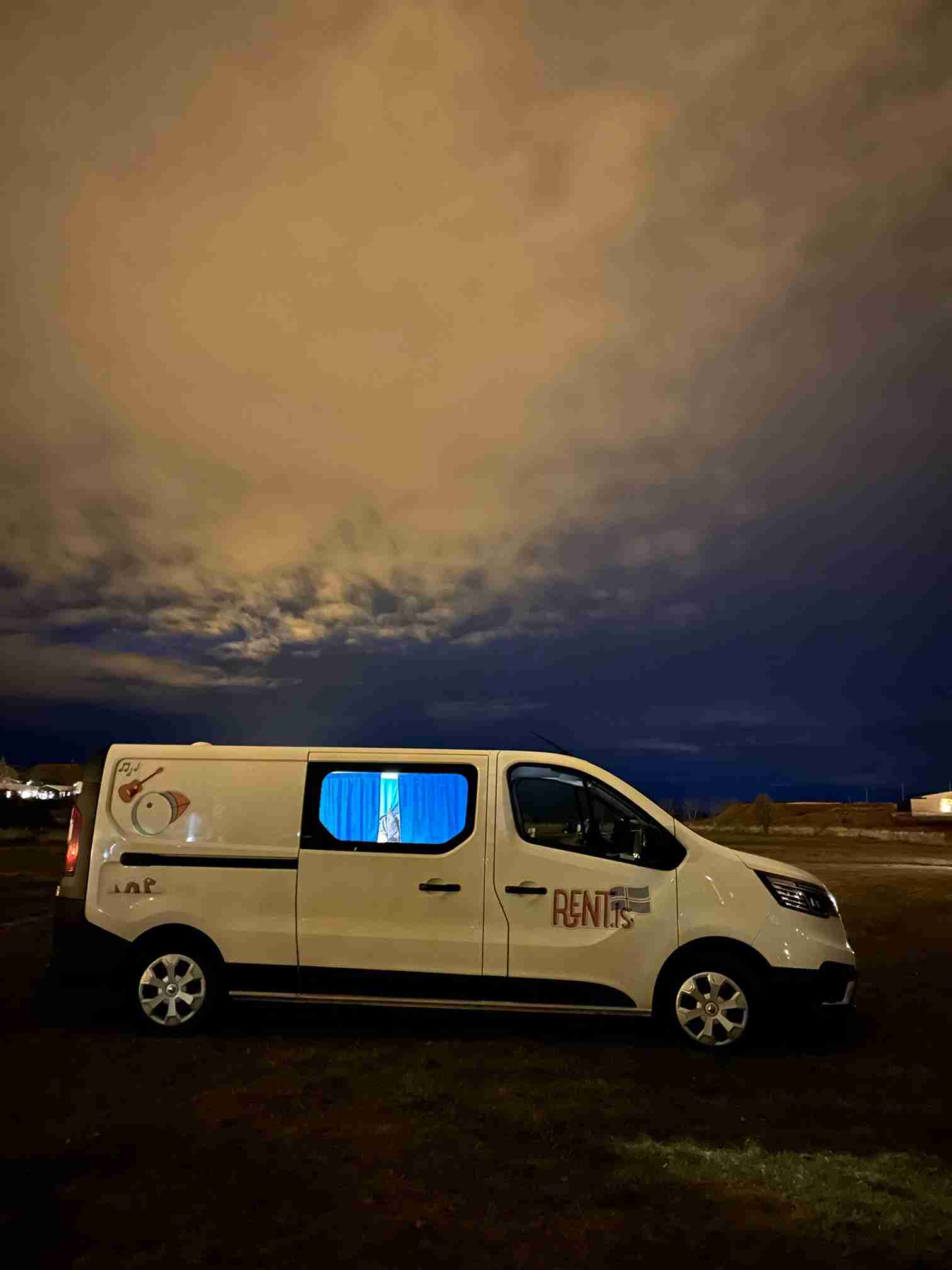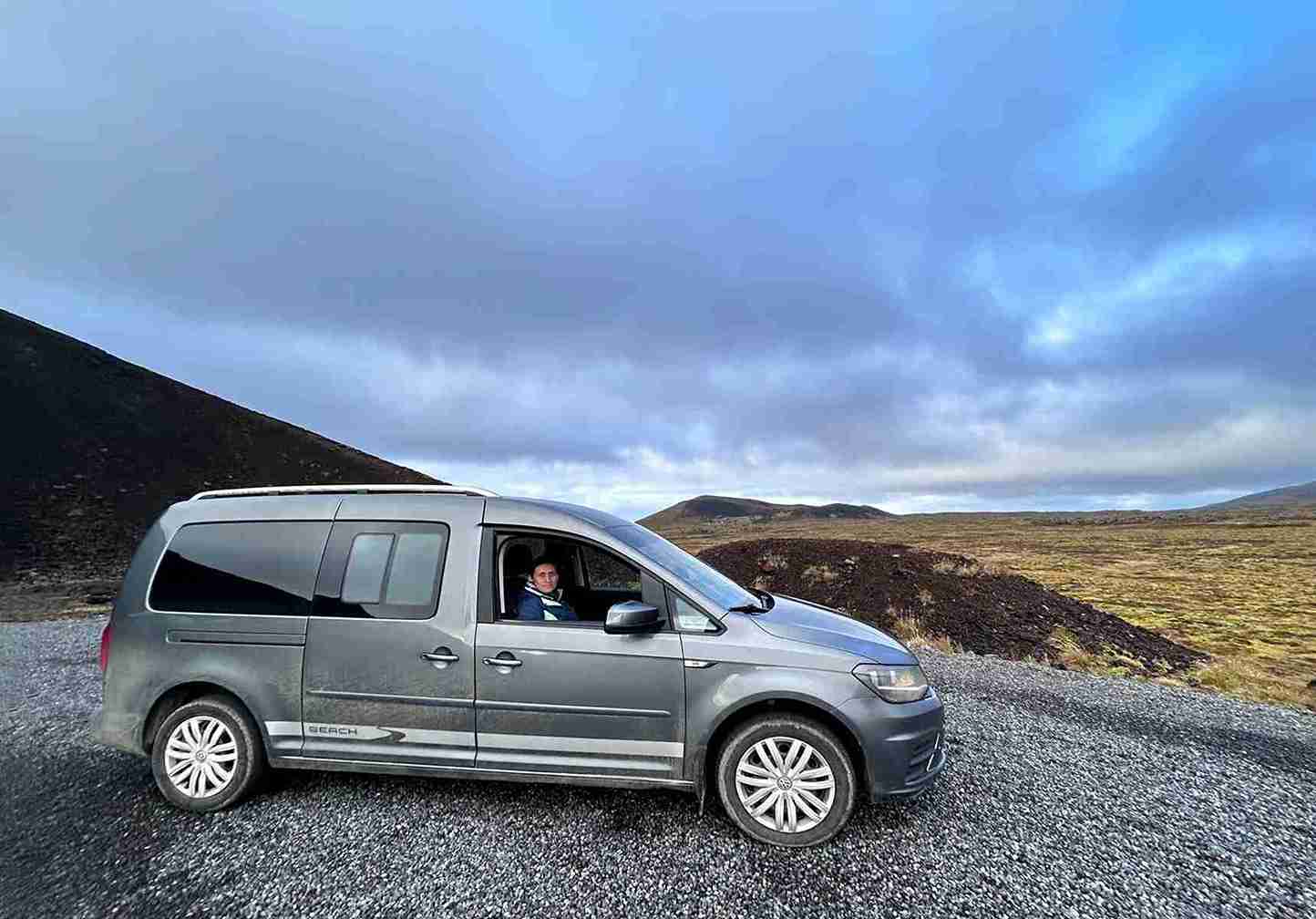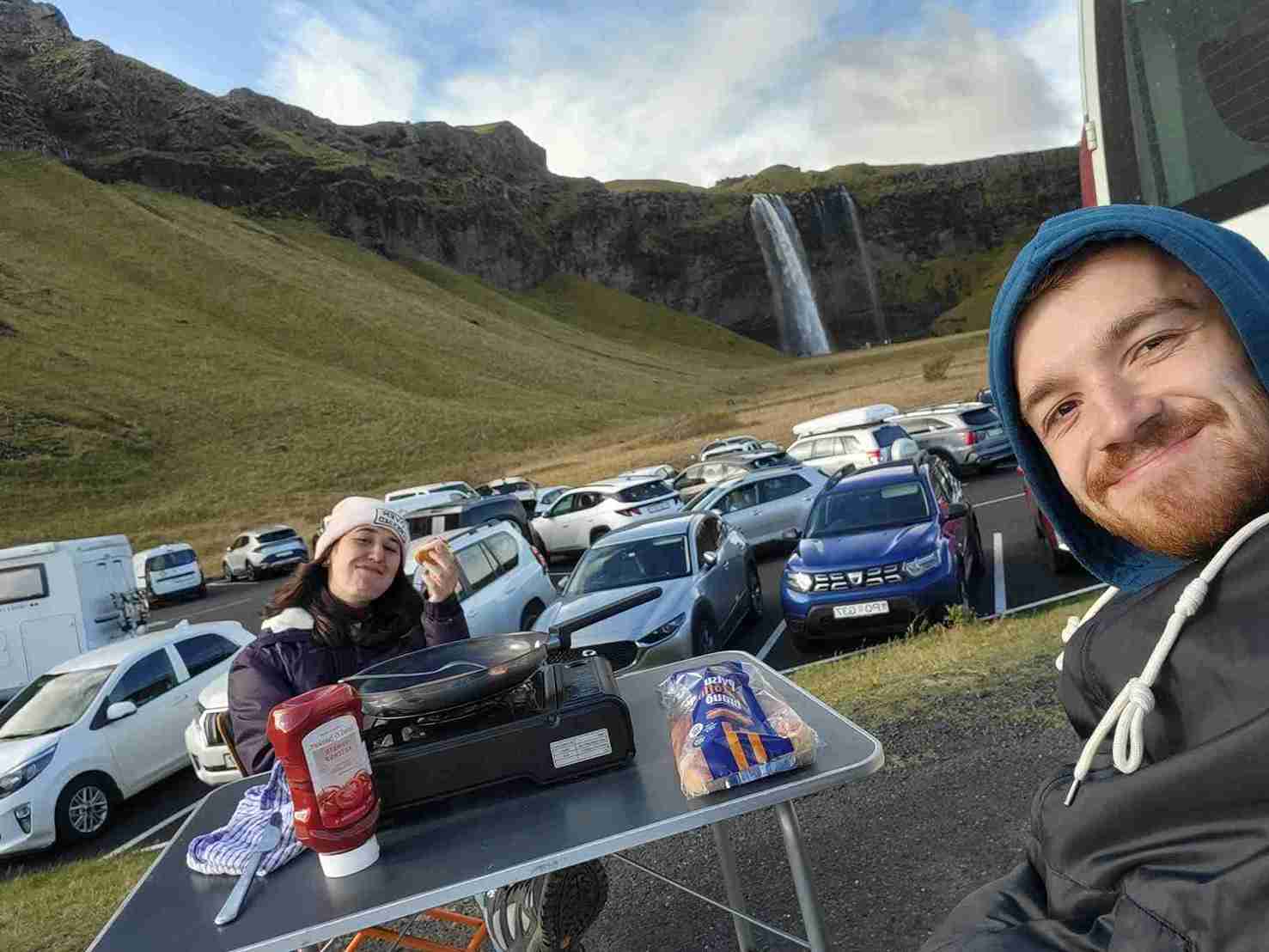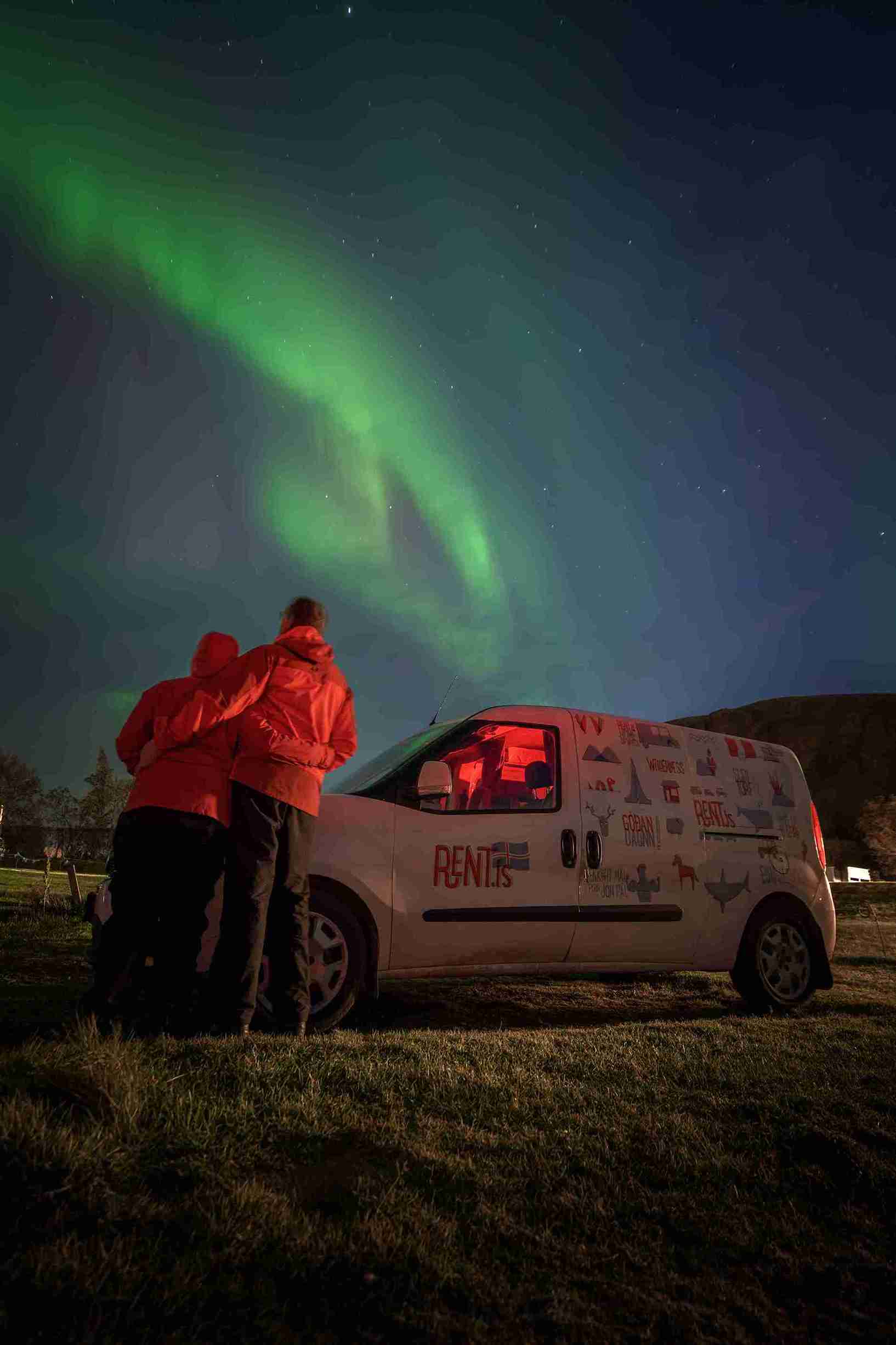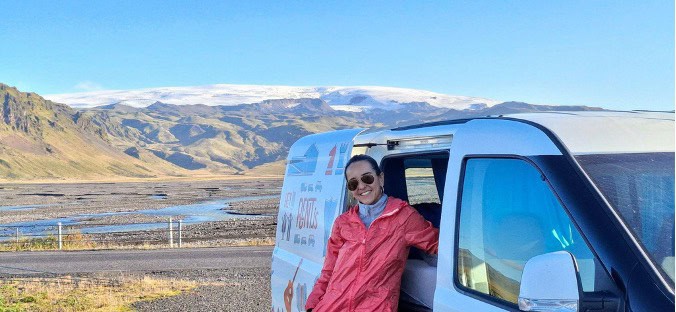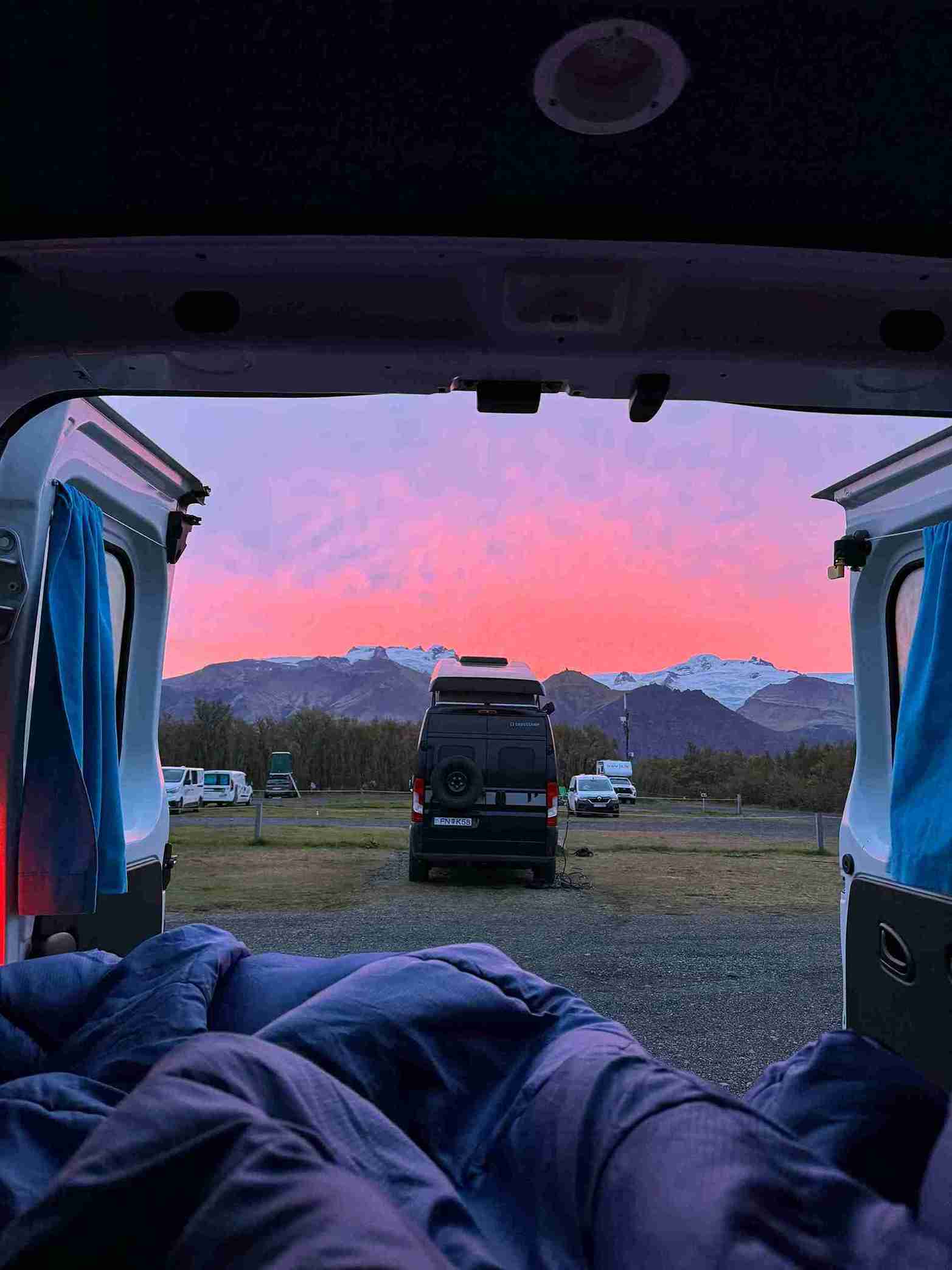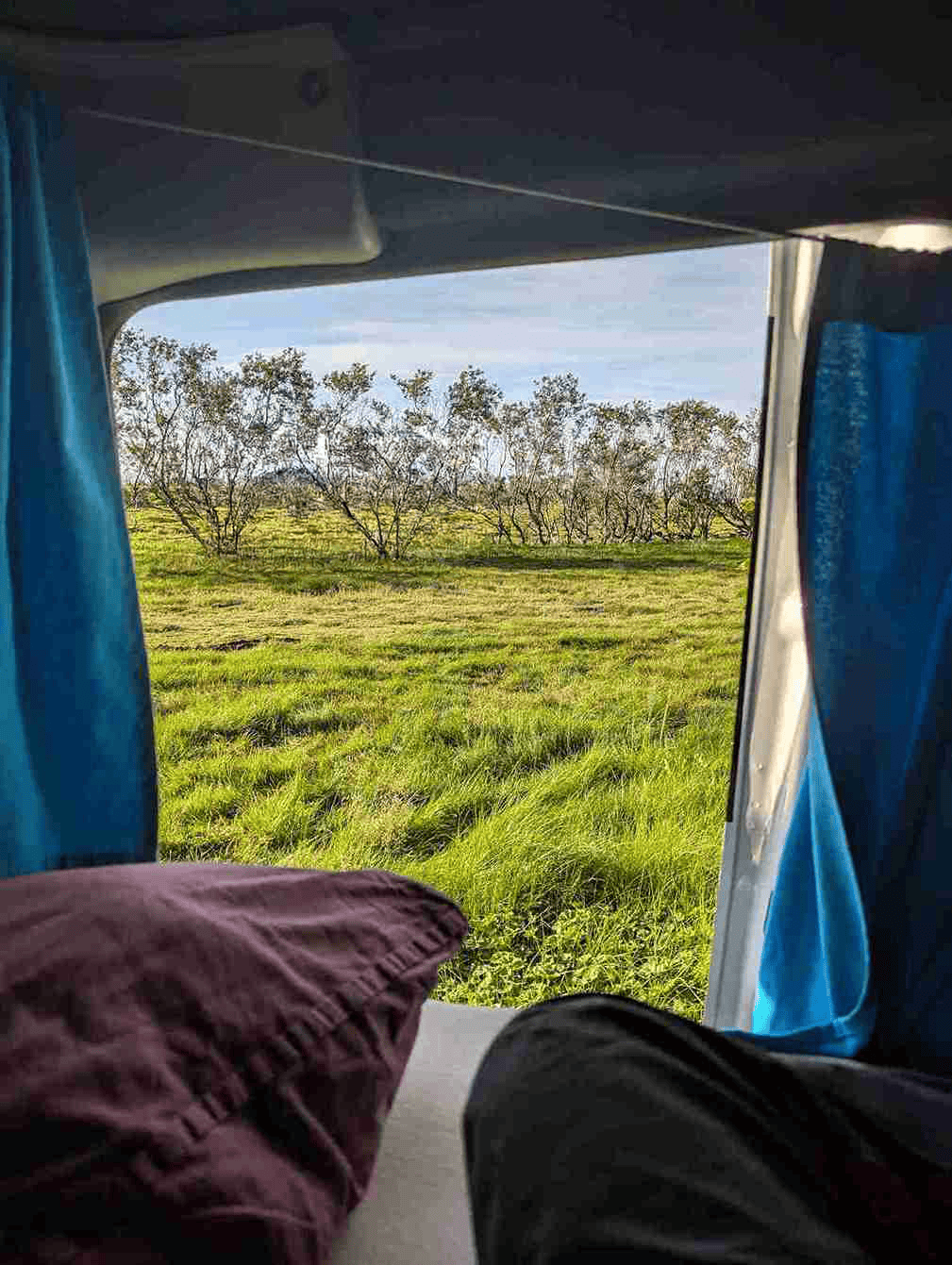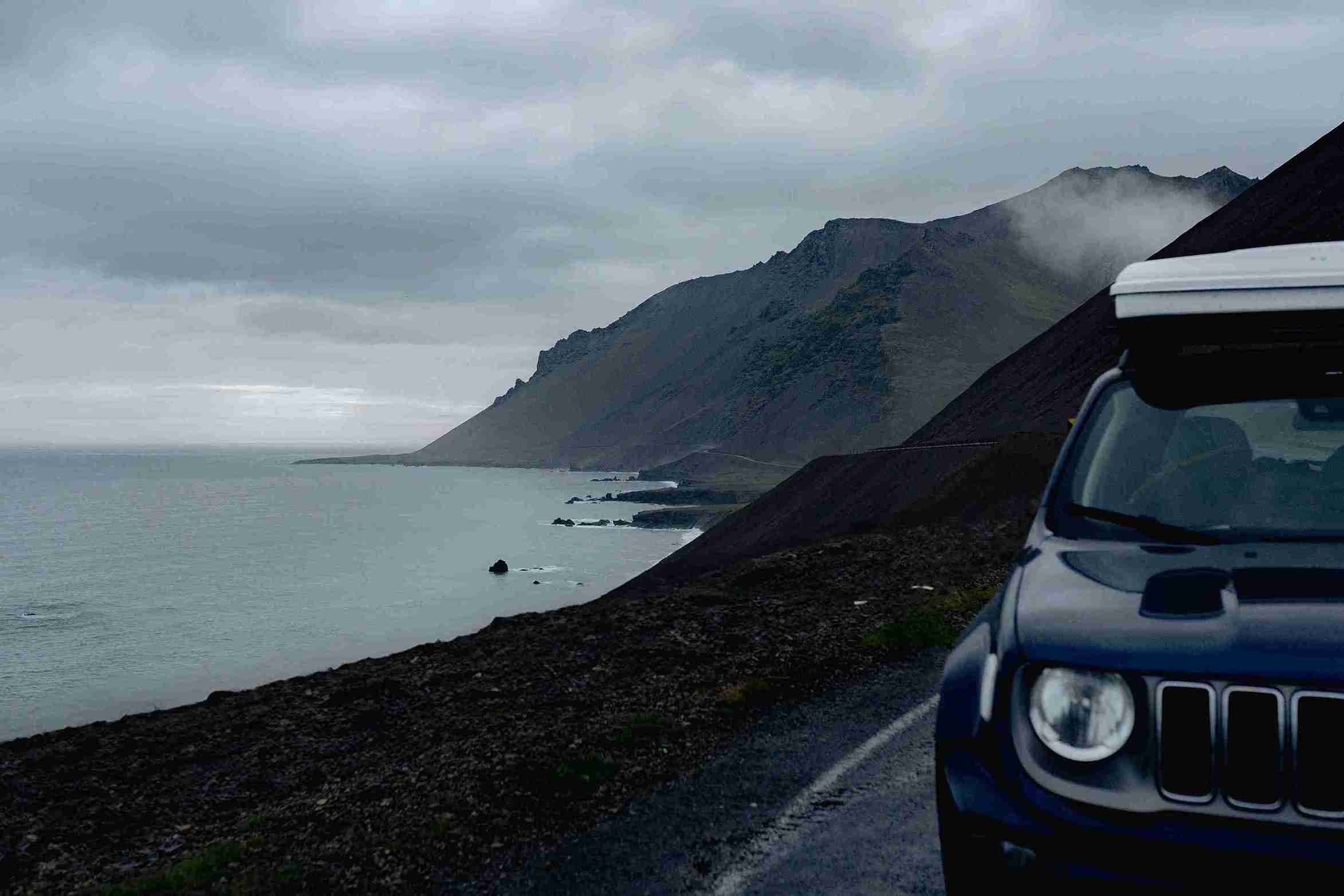Góðan dag!
We’re Michael and Kira, newlyweds from Seattle, WA. We got married a few short weeks ago, and we just kicked off an adventurous 6 month honeymoon with 11 days in Iceland. We love to travel off the beaten path and experience the best that nature has to offer, so Iceland was an ideal destination for us. Our time in the land of fire and ice was jam-packed with breathtaking scenery and fascinating attractions. (Also some extreme weather and mediocre food, but those didn’t stop us from having a fantastic time!)

Our trip began with a few days in the capital of Reykjavik. We wandered on foot around the city center, stopping along the way to visit museums, tourist shops, libraries, and parks. We went up the tower of the huge church, Hallgrimskirkja, for a great view of the city. We took in the spectacular modern architecture of the new Harpa concert hall. And, after mastering the local bus system, we made it to the Árbær open air museum, where we learned about the challenging lives of early Icelanders.
Our most memorable meal in Reykjavik was a traditional Icelandic dinner at Cafe Loki. We had the sampler plates which consisted of mashed fish, smoked fish, fish tart, sheep’s head jelly, and rye bread ice cream. Everything was pretty good except the sheep’s head jelly, which had a pretty unpleasant texture. A great meal for the experience, but not so much for the taste!
On our last morning in Reykjavik, we packed up and hiked over to the
camper van rental place to pick up our van for the next week. On the way, we continued the Icelandic food kick and picked up some hot dogs from Bæjarins Beztu Pylsur food truck. Icelandic hot dogs are made out of local lamb meat, and they’re practically a staple food in Reykjavik. And for good reason – they’re delicious!
Finally, we picked up our fabulous
camper van and hit the road! The van was cozy and compact. It had a platform with a bed in the back, with a fridge and cooking gear stored underneath. It served us well, and we were especially grateful for the free WiFi and the heater, a necessity during the cold, windy nights.
We drove counterclockwise around
the Ring Road, the main highway that circumnavigates all of Iceland. We spent the first day touring the attractions of
the Golden Circle, which is the main tourist circuit near Reyjkavik. After that, the crowds thinned out as we took to the coasts, fjords, hills, and meadows of rural Iceland.

We drove through many striking and spectacular landscapes, from bizarre, barren black and red sand dunes to picture-perfect mountainous fjords to thick, bright green moss on growing on jet black volcanic rock for as far as the eye can see. The various landscapes have evoked images of home, scenes from Lord of the Rings and Game of Thrones, and even of the moon and other planets. It was always exciting to see what’s around the bend. One thing they all had in common though – it was usually cold, raining, and windy. For a land of fire and ice, there sure is a lot of water and wind!

One of first things we noticed about Iceland is the incredible abundance of
waterfalls (or
foss in Icelandic). Along the southern coast and eastern fjords, they’re everywhere you look, cascading beautifully off of every slope. It’s common for farms to be situated at the base of a waterfall, and we speculated that there are probably more waterfalls than farms in the whole country. Some of the more spectacular falls we visited in the first two days included Gullfoss, a gigantic and powerful double falls hidden down in a canyon, and Seljalandsfoss, a tall cascade which you can walk behind.
We also visited a handful of glaciers in the southeast. Or rather, small glacial arms which protrude from the massive glaciers in the highlands. The glacier size is truly staggering; we only saw the tiniest corners of them, and those looked gigantic to us. A highlight was glacier lagoon, a large silty lake which carries bright blue icebergs which break off of Vatnajökull glacier out to a
black sand beach on the coast. We also got a private glacier walk at our second campsite where we walked as close as we felt comfortable and stood on floating icebergs!

On day four of our adventure, the rain was even more persistent than usual, so we took the opportunity to cover quite a bit of ground in the car. We made some quick stops in picturesque fjord towns in the east before heading up North to the Mývatn area. The terrain along the drive was striking: black and red sand dunes and craggy hills almost completely devoid of plant life. The dark gray sky, driving wind, and near desertion all contributed to give the place a truly eerie, other-worldly feel.
After several hours of such stark terrain, Mývatn seemed like a real oasis. It’s a geologically fascinating region with a large lake (vatn means lake in Icelandic), numerous geothermal features, and plenty of vegetation. The plants were apparently a recent introduction; through a soil reclamation process, the inhospitable volcanic sand has gradually been made habitable to a host of shrubs and birch trees. At this time of year, the plants are out in full fall colors, a beautiful sight when set against the black rock backdrop.

Over the next two days, we were rewarded with the best weather of our trip: partially clear blue skies, and not a single drop of rain! (Though the wind was often still quite strong…) We took full advantage of the clear weather by doing lots of hiking. We wandered to and around many fascinating geological features: caves, crevices, arches, and even “pseudo-craters,” which form when lava encounters cold, fresh water. We also made friends with plenty of sheep, Iceland’s most abundant animal.

We also took advantage of the area’s geothermal activity by going swimming at the Mývatn Nature Baths hot spring. The water is mineral-rich, silty, and bright blue – similar to the famed Blue Lagoon, but much farther of the beaten tourist track.

We spent the afternoon relaxing in the hot spring and sauna before heading back into the cold and wind. At another interesting geothermal stop, we encountered boiling mud pots and loudly hissing fumaroles. No swimming permitted here.
In the north, the foss are certainly less abundant, but the few we saw there were some of the grandest of all. The standouts were Dettifoss, Selfoss, and Goðafoss, each of which were powerful and beautiful in their own ways.
For probably the most “touristy” excursion of our Iceland escapades, we went on a guided horse trekking tour near the charming fjord town of Akureyri. Icelandic horses are unique in that they have an extra gait; along with the walk, trot, canter, and gallop, they have a shuffling “Tölt,” which makes for a smoother ride. It was admittedly a bit difficult to tell the difference between tölt and trot (Michael described them as “bumpy” and “more bumpy”), but the tour was great fun all the same. We tölted down farm roads, along trails, and even across a waist-deep river, all under a clear blue sky.

For our final two days in Iceland, we journeyed out to the Snæfellsnes peninsula, where we encountered, among other things, absolutely awful winds – stronger than we’ve ever experienced before. Our very first excursion in the Snæfellsnes region was going to be a short hike around the rim of a crater. However, we didn’t make it far. As we crested the rim of the crater, Kira was swept clear off of the trail, and we were forced to crawl on hands and knees to make it back to the sheltered side of the hill. From that point onwards, we avoided walks longer than a few hundred meters. We made quick dashes to the various attractions, our bodies running at odd angles to avoid getting the full force of the wind in our faces.

Even in the brutal assault of the wind, we managed to fit in many awe-inspiring sights. The Snæfellsnes peninsula is one of the most ruggedly beautiful parts of the whole island, with steep, picturesque mountains and craggy sea cliffs. We ventured out to the westernmost point of Iceland right at dusk, when the lighthouse was turning on.

The highlight of Snæfellsnes was Rauðfeldar canyon, a narrow, winding slot canyon cut into impressive, towering cliffs. The inside of the canyon is cool and mossy and a stream winds through its length. We scrambled up through the canyon for a little ways before our path was impeded by the water. Rauðfeldar was undoubtedly worth the 600 meter walk in the howling wind that it took to get there. The picture really doesn’t do it justice.
On our last afternoon in Iceland, we drove back to the Reykjavik area. On the way, we took a detour to Reykjavik’s state-of-the-art geothermal power plant. It had an excellent exhibit on the geology of volcanoes and earthquakes and the process of converting geothermal heat into electricity and hot water for the city and surrounding villages. We marveled at the feat of engineering it takes to harness the Earth’s power and to make Iceland one of the most sustainable countries in the world.
After the plant tour, we camped near the airport in preparation for the next day’s early morning flight. The next morning we awoke before dawn to a clear, starry sky which afforded us our only glimpse of the northern lights. They were extremely dim, nearly indistinguishable from wispy clouds except for their fluid, cascading motion. Not quite the spectacular display we had hoped for, but not a bad Icelandic send-off. I guess we’ll just have to come back soon!
Until then,
Kira and Michael
Happy Camping! #CamperStories
Iceland Travel Guides


If you like what you see, please subscribe to our YouTube channel!
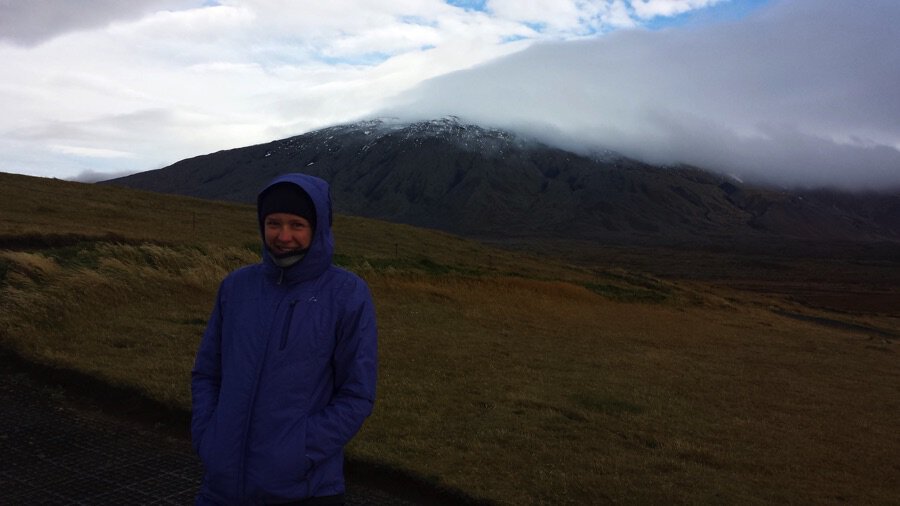 We drove through many striking and spectacular landscapes, from bizarre, barren black and red sand dunes to picture-perfect mountainous fjords to thick, bright green moss on growing on jet black volcanic rock for as far as the eye can see. The various landscapes have evoked images of home, scenes from Lord of the Rings and Game of Thrones, and even of the moon and other planets. It was always exciting to see what’s around the bend. One thing they all had in common though – it was usually cold, raining, and windy. For a land of fire and ice, there sure is a lot of water and wind!
We drove through many striking and spectacular landscapes, from bizarre, barren black and red sand dunes to picture-perfect mountainous fjords to thick, bright green moss on growing on jet black volcanic rock for as far as the eye can see. The various landscapes have evoked images of home, scenes from Lord of the Rings and Game of Thrones, and even of the moon and other planets. It was always exciting to see what’s around the bend. One thing they all had in common though – it was usually cold, raining, and windy. For a land of fire and ice, there sure is a lot of water and wind!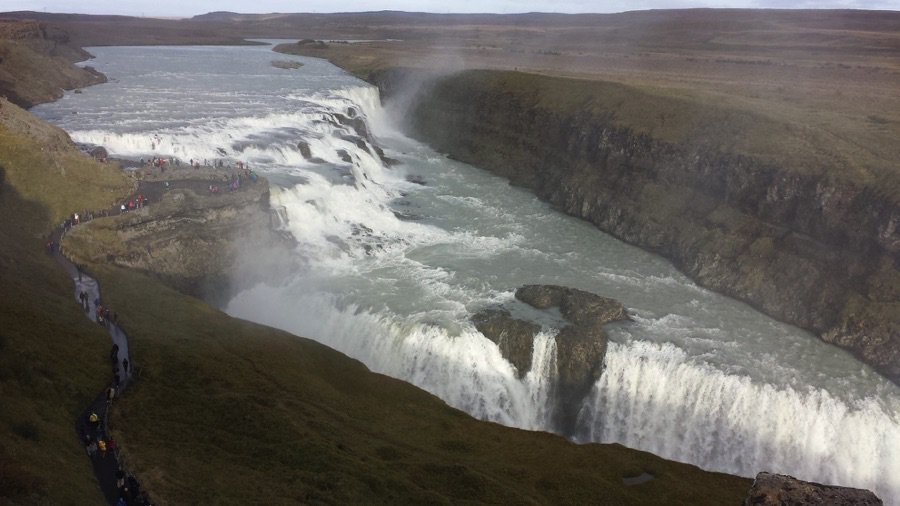 One of first things we noticed about Iceland is the incredible abundance of waterfalls (or foss in Icelandic). Along the southern coast and eastern fjords, they’re everywhere you look, cascading beautifully off of every slope. It’s common for farms to be situated at the base of a waterfall, and we speculated that there are probably more waterfalls than farms in the whole country. Some of the more spectacular falls we visited in the first two days included Gullfoss, a gigantic and powerful double falls hidden down in a canyon, and Seljalandsfoss, a tall cascade which you can walk behind.
One of first things we noticed about Iceland is the incredible abundance of waterfalls (or foss in Icelandic). Along the southern coast and eastern fjords, they’re everywhere you look, cascading beautifully off of every slope. It’s common for farms to be situated at the base of a waterfall, and we speculated that there are probably more waterfalls than farms in the whole country. Some of the more spectacular falls we visited in the first two days included Gullfoss, a gigantic and powerful double falls hidden down in a canyon, and Seljalandsfoss, a tall cascade which you can walk behind.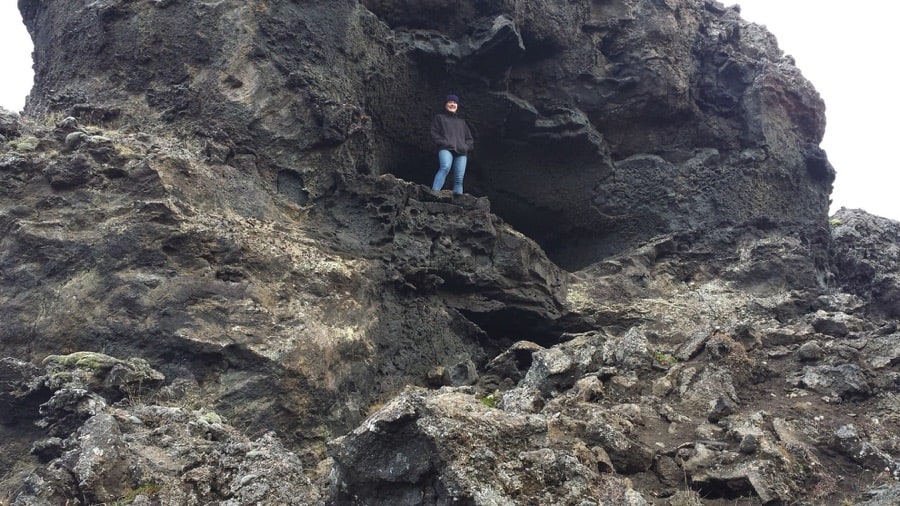 We also took advantage of the area’s geothermal activity by going swimming at the Mývatn Nature Baths hot spring. The water is mineral-rich, silty, and bright blue – similar to the famed Blue Lagoon, but much farther of the beaten tourist track.
We also took advantage of the area’s geothermal activity by going swimming at the Mývatn Nature Baths hot spring. The water is mineral-rich, silty, and bright blue – similar to the famed Blue Lagoon, but much farther of the beaten tourist track.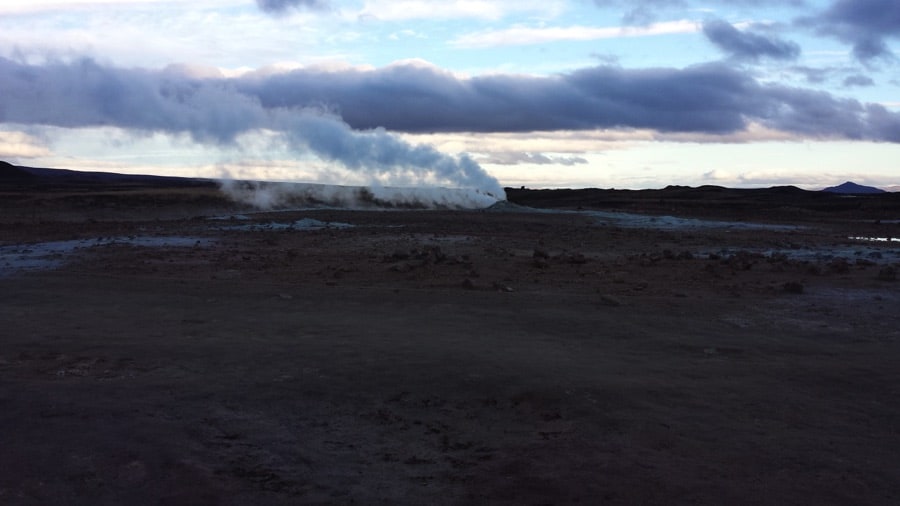 We spent the afternoon relaxing in the hot spring and sauna before heading back into the cold and wind. At another interesting geothermal stop, we encountered boiling mud pots and loudly hissing fumaroles. No swimming permitted here.
We spent the afternoon relaxing in the hot spring and sauna before heading back into the cold and wind. At another interesting geothermal stop, we encountered boiling mud pots and loudly hissing fumaroles. No swimming permitted here.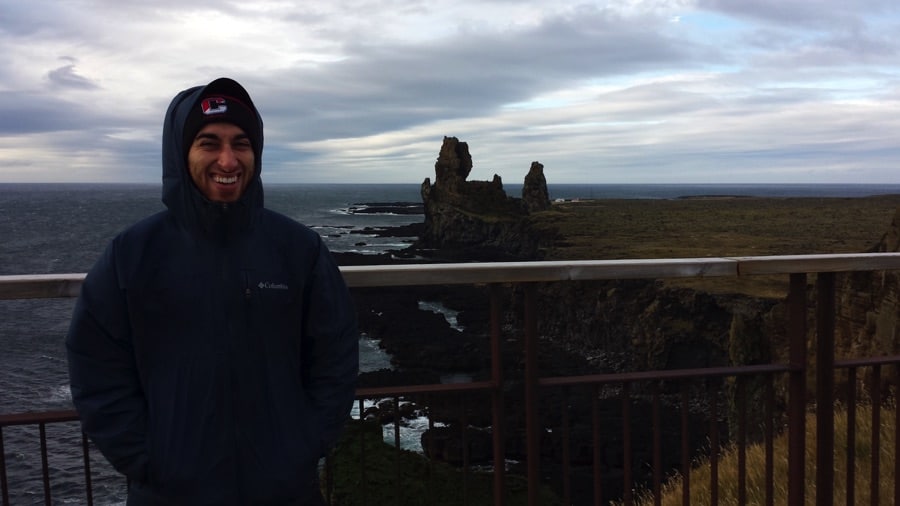 Even in the brutal assault of the wind, we managed to fit in many awe-inspiring sights. The Snæfellsnes peninsula is one of the most ruggedly beautiful parts of the whole island, with steep, picturesque mountains and craggy sea cliffs. We ventured out to the westernmost point of Iceland right at dusk, when the lighthouse was turning on.
Even in the brutal assault of the wind, we managed to fit in many awe-inspiring sights. The Snæfellsnes peninsula is one of the most ruggedly beautiful parts of the whole island, with steep, picturesque mountains and craggy sea cliffs. We ventured out to the westernmost point of Iceland right at dusk, when the lighthouse was turning on.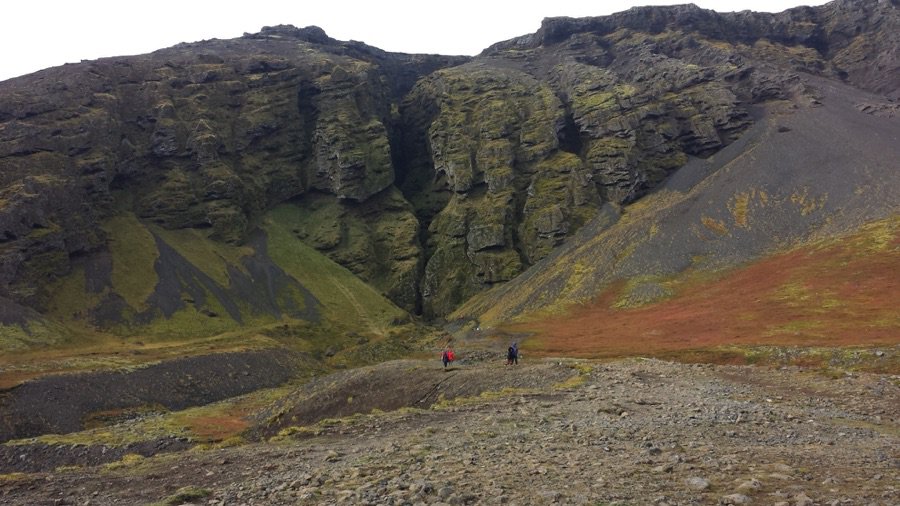 The highlight of Snæfellsnes was Rauðfeldar canyon, a narrow, winding slot canyon cut into impressive, towering cliffs. The inside of the canyon is cool and mossy and a stream winds through its length. We scrambled up through the canyon for a little ways before our path was impeded by the water. Rauðfeldar was undoubtedly worth the 600 meter walk in the howling wind that it took to get there. The picture really doesn’t do it justice.
The highlight of Snæfellsnes was Rauðfeldar canyon, a narrow, winding slot canyon cut into impressive, towering cliffs. The inside of the canyon is cool and mossy and a stream winds through its length. We scrambled up through the canyon for a little ways before our path was impeded by the water. Rauðfeldar was undoubtedly worth the 600 meter walk in the howling wind that it took to get there. The picture really doesn’t do it justice.
